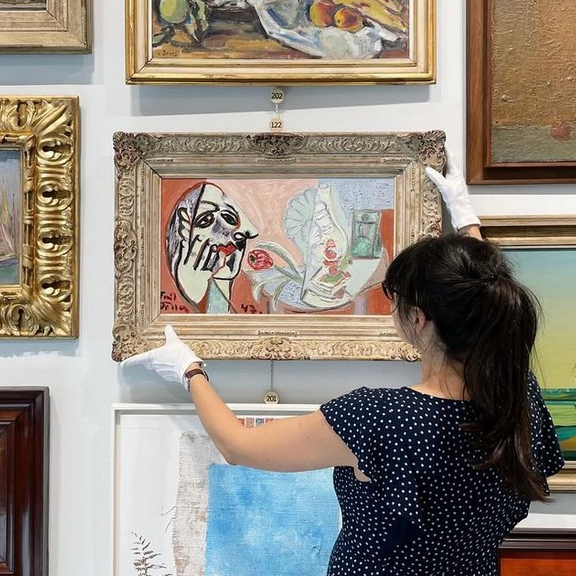
oil on canvas
1943
lower left
60 × 80 cm
framed
This rare high-value oil painting comes from Lhoták’s most collectible period. He painted it at the time of peak activity of Group 42 (Skupina 42) and in his most productive year when he was burdened by the consequences of the economic crisis associated with the war, as he had to provide for his family. During 1943, he executed one hundred and forty-six works, usually of smaller dimensions, but also several of medium or larger formats – among them the presented Glider in the Suburbs.
The aesthetics of Group 42 had a huge influence on Lhoták. To a certain extent, he stopped looking at the past; historical inventions of airships and hot air balloons disappeared from his work for a while, and he turned to the future. With great interest, he began to depict the progress of civilisation and its planes, trains, urban traffic and life on the outskirts. Glider in the Suburbs presents to the beholders the environment of a quarry on the outskirts of one of the French cities, which the painter took as an opportunity to depict various devices. The meticulously captured landscape also contains a few human figures, bringing several small stories into a single canvas. By the left fence in the foreground, a man casually leans against the entrance pale, perhaps enjoying his cigarette while resting. Behind the fence on the right, you can see the ongoing geodetic measurement and several other diligent workers in a cluster of tools and devices scattered around. The dominant item in this scenery with a clear azure sky is the white engineless plane, a glider with the number 11, which Lhoták also captured in several of his paintings the previous year. This painting is also important in the artist’s further development, as in the following years, he developed the theme of many diverse objects scattered in the landscape, brought to perfection in his famous Weather Station after the Storm (1944, 80 ´ 120 cm, National Gallery Prague).
Glider in the Suburbs is comparable to many of Lhoták’s extraordinary works. Its high collectible value enhances the fact that until recently, it has been in the family of the owner, who acquired it directly from the artist. It is listed in the artist’s inventory under the same title and No. 465/33. It was also mentioned in Lhoták’s monograph (L. H. Augustin: Kamil Lhoták, Prague 2000, p. 112). Assessed during consultations by PhDr. A. Strnadlová and L. Šteffek. The expertise of PhDr. R. Michalová, Ph.D., is attached.







